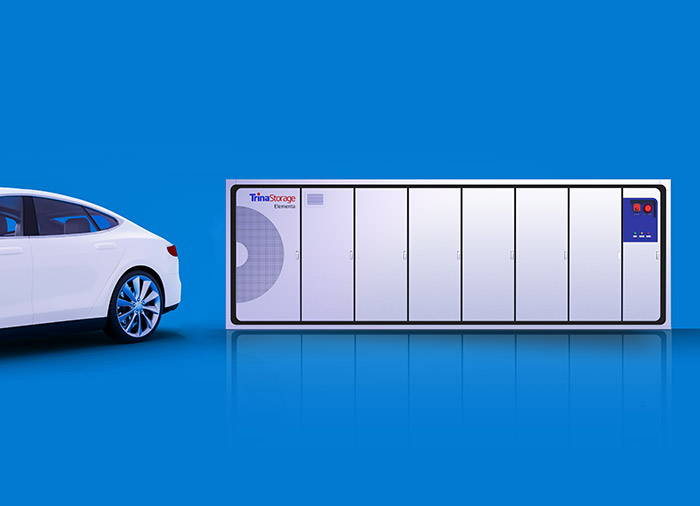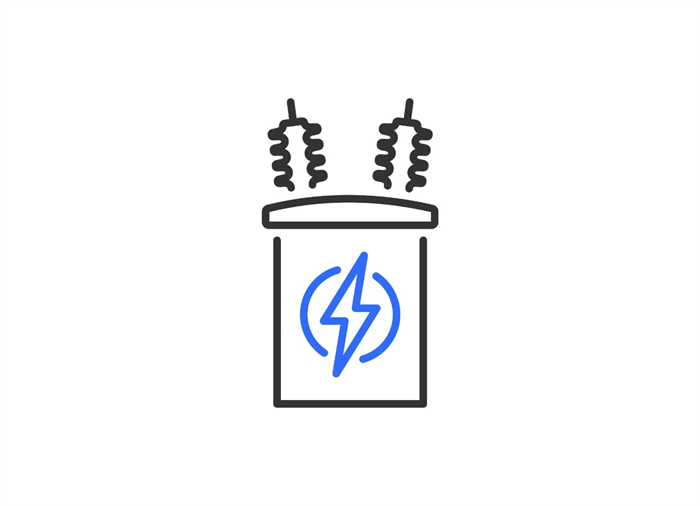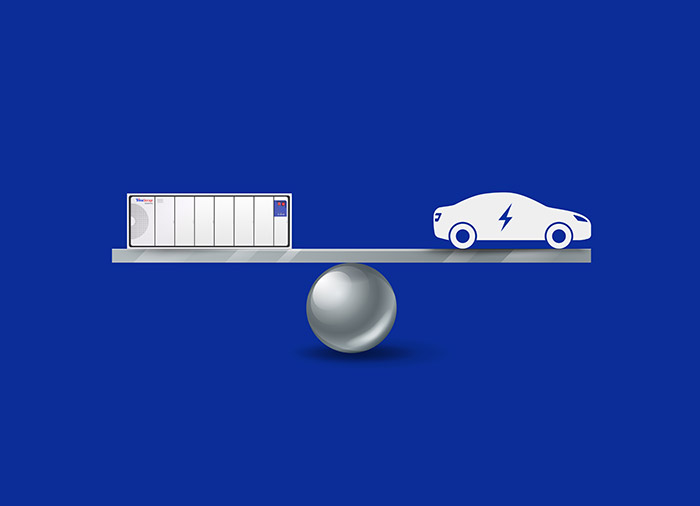Accelerating Polarity Between EV & ESS Battery Technology
- 23/05/17
- Energy Storage
The global battery market has experienced significant growth and diversification in recent years, driven by the increasing demand for clean and efficient energy solutions. This expansion has led to the emergence of innovative battery technologies catering to the unique needs of two major markets: Electric Vehicles (EVs) and stationary Energy Storage Systems (ESS).
Advancements in lithium-ion technology have enabled higher energy densities, longer life cycles and lower costs, fostering rapid deployment of EVs and ESS in various sectors. However, the market is also witnessing emerging innovations such as solid-state batteries, which promise even greater performance and safety benefits. As the global push for clean renewable energy and reduced carbon emissions intensifies, the battery technology market is poised for continued expansion, revolutionising both transportation and energy infrastructure along the way.
As a vertically integrated, leading Battery Energy Storage System (BESS) supplier, Trina Storage has been at the forefront of optimising capabilities to meet these evolving market demands and in this guide we’ll be exploring the divergent paths of battery technology and its future.

The state of the battery market
In this section, we'll delve into the current state of the battery market, exploring key trends and technological advancements shaping its growth. We'll examine how the rise of electric vehicles and stationary energy storage systems is driving the demand for innovative battery solutions and transforming the energy landscape. Here are the main trends we’re noticing.
Rapid growth
According to a McKinsey report, “global demand for batteries is increasing, driven largely by the imperative to reduce climate change through electrification of mobility and the broader energy transition.” The battery market has, therefore, experienced significant growth in recent years, primarily driven by the increasing adoption of EVs and the expanding use of renewable energy sources, which necessitates efficient stationary ESS.
Technological advancements
The market has seen continuous improvements in battery technologies, particularly in lithium-ion batteries. R&D efforts have led to increased energy density, longer cycle life, better safety, and faster charging capabilities.
Diversification
The battery market is becoming more diversified as it caters to the specific needs of various industries, including electric vehicles, grid-scale energy storage, consumer electronics, and more. Each industry has unique requirements, leading to the development of specialised battery technologies.
Cost reduction
The cost of batteries, especially lithium-ion batteries, has significantly decreased over the past decade due to advancements in technology, economies of scale, and increased competition. This reduction in cost has made electric vehicles and renewable energy storage solutions more accessible and economically viable.
However, it is important to note that the constrained supply chain can lead to short-term price increases. As the demand for electric vehicles and energy storage systems continues to surge, the pressure on raw materials, such as lithium and cobalt, intensifies.
Sustainability concerns
As the market expands, concerns regarding the environmental impact of batteries, particularly regarding the sourcing of raw materials and end-of-life disposal, are becoming more prominent. This has led to increased focus on sustainable material sourcing, recycling initiatives, and the development of battery technologies with reduced environmental footprints.
Supply chain challenges
The battery market has faced some supply chain challenges, which reiterates the importance of vertical integration. Raw material shortages and geopolitical tensions exacerbate these which can be connected to short term price increases. These challenges have emphasised the need for a more resilient and diversified supply chain to ensure the continued growth and stability of the market.

Differing commercial approaches for EVs & ESS
When it comes to developing battery innovation, there are several key differences emerging in areas such as sourcing materials, product development, critical challenges and business management. These are all linked to performance lifetime metrics.
Sourcing materials
EV battery companies focus on acquiring materials for high-energy-density batteries, which may include lithium nickel manganese cobalt oxide (NMC) or lithium nickel cobalt aluminium oxide (NCA) chemistries. ESS battery companies, on the other hand, prioritise materials for chemistries that offer longer cycle life and improved safety, such as lithium iron phosphate (LiFePO4) or lithium titanate (LTO).
However, it is worth noting that LiFePO4 battery chemistry is also being increasingly considered for EV applications due to its range and safety benefits. This shift has created strong competition in the market, as more manufacturers explore the potential of LiFePO4 batteries, further diversifying the landscape of battery technologies for electric vehicles and energy storage systems.
Product development
EV battery companies invest in R&D to enhance energy density, charging speed, and thermal management. ESS battery companies concentrate on increasing capacity, cycle life, and cost efficiency. This results in distinct design priorities and technological innovations for each sector.
Additionally, it is important to note that the end of life for EV batteries typically arrives ahead of ESS batteries. This is due to the fact that EV batteries undergo more intense operating conditions, such as frequent charging and discharging cycles, and exposure to a wider range of temperatures. As a result, the durability and longevity requirements for EV batteries differ from those of ESS batteries, further shaping the development priorities and strategies for each industry.
Critical challenges
EV battery companies face challenges in reducing battery costs, increasing driving range, and developing fast-charging infrastructure. ESS battery companies grapple with ensuring grid compatibility, optimising energy storage capacity, and providing scalable solutions to accommodate various storage requirements.
Business management
EV battery companies often partner with automakers and establish joint ventures to secure their position in the competitive EV market. ESS battery companies, meanwhile, collaborate with utilities, renewable energy producers, and facility managers to develop tailor-made solutions for diverse energy storage needs.
Client procurement
EV battery companies target automakers and EV manufacturers as their primary clients. ESS battery companies cater to a broader clientele, including utility companies, commercial and industrial facilities, renewable energy producers, and residential customers.
While both EV and ESS battery technology companies operate in the general battery market, they exhibit polarising differences in their approaches to materials sourcing, product development, overcoming challenges, business management, and client procurement, as they cater to the unique requirements of their respective markets.

Differing technical requirements for EV & ESS
According to the latest Energy Storage Technology Trends report by Wood Mackenzie,
Battery technology is heading in two distinct directions, at an accelerating polarity, catering to the differing needs of electric vehicles (EV) and stationary energy storage systems (ESS).
While both types of batteries use lithium-ion technology, the applications have contrasting demands in terms of energy density, power output, and cycle life. EV batteries need to be lightweight and compact, with high power output for acceleration and regenerative braking. Stationary ESS batteries, on the other hand, prioritise high energy density for longer duration discharge and recharge cycles. Additionally, stationary energy storage batteries also require complex safety features due to their larger size and potential for grid integration.
Batteries for electric vehicles (EVs) and energy storage systems (ESS) serve different purposes and have distinct requirements. Here are the key differences between them:
|
Feature |
Electric Vehicle |
Energy Storage System |
|
Energy Density |
EV batteries prioritise high energy density, which allows them to store more energy in a compact and lightweight form. This is crucial for providing longer driving ranges and maintaining vehicle efficiency |
In contrast, although it is still important, ESS batteries are less concerned about energy density and more on other factors, such as capacity and cost. |
|
Charging Speed |
For EVs, fast charging capabilities are essential, as they enable drivers to recharge their vehicles quickly during trips, reducing downtime and increasing convenience. |
ESS batteries generally do not require such fast charging capabilities, as their primary function is to store energy over longer periods. |
|
Capacity & |
EV batteries also require a reasonable cycle life of between 2,000 - 3,000 cycles but their focus is more on energy density and fast charging. The actual lifespan of an EV battery can vary depending on factors such as usage patterns, charging habits, and environmental conditions. |
ESS batteries emphasise capacity and long cycle life averaging 6,000 to 10,000 times, as they need to store large amounts of energy and undergo numerous charge / discharge cycles over their lifetime. They should be able to maintain their performance through thousands of cycles without significant degradation. |
|
Discharge Rate |
EV batteries are designed to handle high discharge rates to provide the necessary power for acceleration and maintaining high speeds. |
ESS batteries, on the other hand, are typically subjected to lower discharge rates as they provide energy to the grid or buildings over extended periods. The market is moving towards longer duration storage too, which means discharging the batteries in 1 hour versus the previous time frame of between 2 – 4 hours. |
|
Cost Efficiency |
Batteries are the most expensive component in EVs, and their cost has a significant impact on the final price of the vehicle. By achieving cost efficiency in battery production, EV manufacturers can reduce vehicle prices, making them more competitive thus increasing consumer adoption. |
The primary focus for stationary ESS batteries is to minimise costs while maintaining performance, which can make renewable energy storage solutions more accessible and economically viable. |
|
Thermal |
Effective thermal management is crucial for EV batteries, as high-power discharge and fast charging generate heat that can impact performance, safety, and lifespan. Maintaining optimal temperatures prevents degradation, extends driving range, and mitigates the risk of thermal runaway, ensuring consistent power output and overall battery reliability. |
Essential for stationary ESS as it ensures optimal performance, safety, and longevity. Managing heat generated during high-energy discharge and rapid charging cycles prevents degradation and safeguards against thermal runaway. Proper temperature regulation is crucial for consistent energy output and maintaining overall system reliability. |
|
Battery |
EV batteries might employ high-energy-density chemistries like lithium nickel manganese cobalt oxide (NMC) or lithium nickel cobalt aluminium oxide (NCA) whilst also adopting LFP chemistry as innovation continues to improve in this market. |
ESS batteries use lithium iron phosphate (LiFePO4 / LFP) or lithium titanate (LTO) chemistries for their longer cycle life and improved safety and is a proven industry shift. |
Conclusion
In this guide, we’ve acknowledged the current trends in the battery market, highlighted the accelerating polarity between EV and ESS battery technologies, and particularly focused on their differing requirements and applications. For stationary ESS technology in utility-scale applications and grid-networks, key focus points for innovation include capacity, long cycle life, cost efficiency, thermal management, and developing battery chemistries.
Although electric vehicle (EV) and energy storage system (ESS) batteries both rely on lithium-ion technology, their specific applications lead to divergent requirements and priorities. The distinct demands of each sector necessitate tailored approaches in research, development, and manufacturing, resulting in unique battery solutions optimised for their respective use cases. Consequently, as the battery technology market continues to evolve, the differences between EV and ESS batteries are becoming more pronounced, reflecting the growing specialisation in each field.
Trina Storage Elementa is an innovative battery energy storage solution, equipped with lithium iron phosphate (LFP) batteries, specifically engineered for ESS applications and duty profiles. These batteries have been meticulously developed to meet the unique requirements of energy storage systems; including long cycle life, enhanced safety, and optimal performance under various operating conditions. By utilising LFP battery chemistry, the Trina Storage Elementa ensures a reliable and efficient energy storage option for a wide range of applications, further solidifying its position as a leading choice within the industry.
Relevant Topics
Smart Energy Solutions
delivered straight to your inbox

